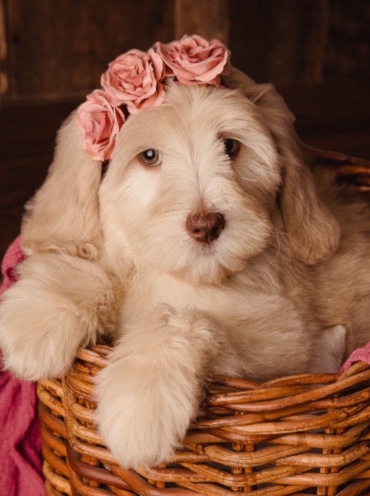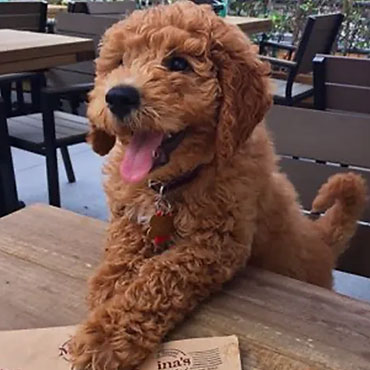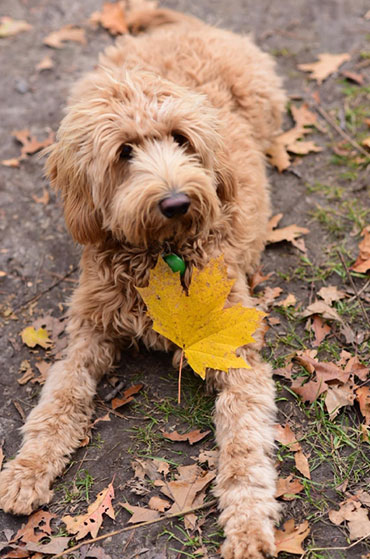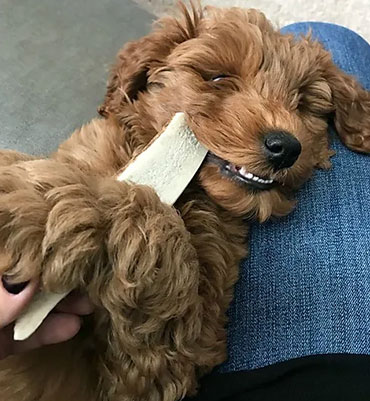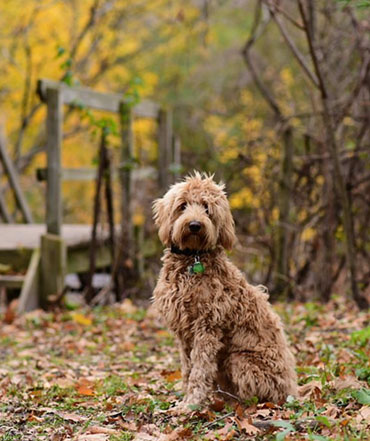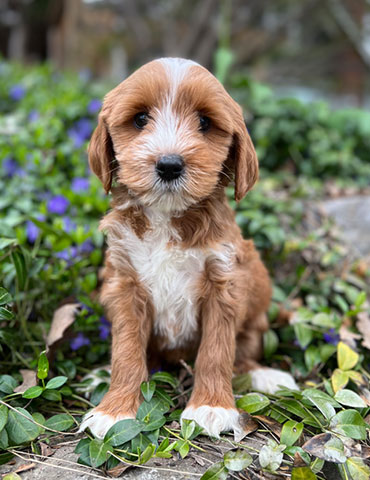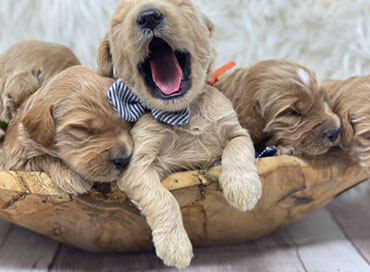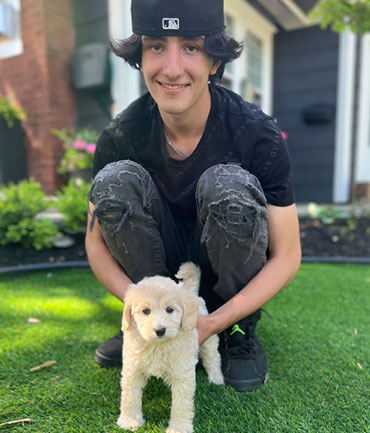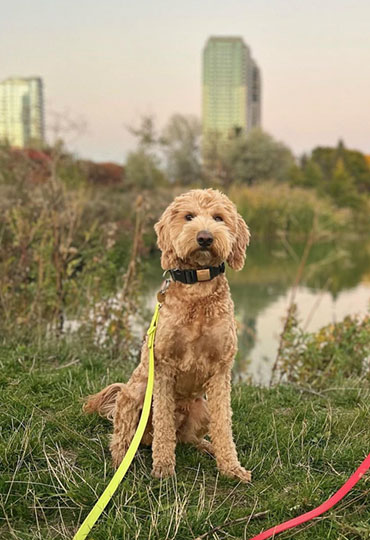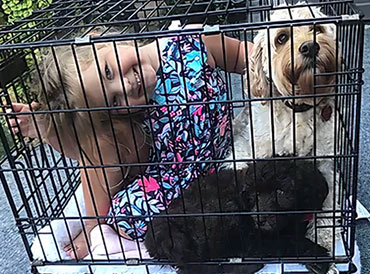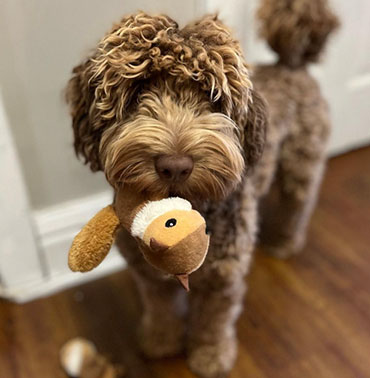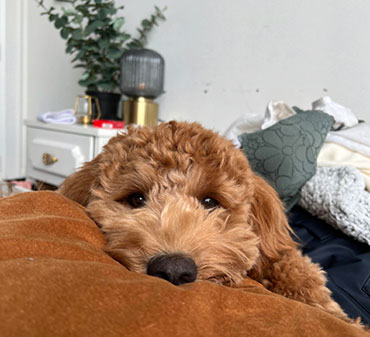If you’ve ever wondered how to get rid of fleas on dog bedding in your home, in your garden, and even from your beloved
dog, I’ve got home remedies have got you covered!
Fleas are the bane of any dog owner’s life. Not only will fleas irritate your dog and cause excessive scratching, once
they get into your house, but they also lay their eggs in your furniture, carpet, and anywhere else they can access.
We recommend following the advice of your veterinarian, but if you’re set on a natural approach, the good news is that
there are plenty of ways to treat fleas on dogs naturally without using chemical treatments. If you’re wondering how to
get rid of fleas on dog hair, dog skin, from inside your home, and even out in the garden, read on to discover top 30 tips
on treating fleas at home using all-natural ingredients.
Fleas on Your Dog
If your dog is scratching and you think it’s flea related, there’s plenty of flea home remedies for dogs to choose from.
Whether you’re looking for a home-made collar, comb, dip, scrub, or something else, we’ve got plenty of ways to treat
fleas on dogs without using any chemicals.
Washes, Sprays, Dips, and Rubs
ESSENTIAL OILS FLEA SPRAY
To make an effective natural insect repellent for dogs that can be applied daily, add five drops each of tea tree oil,
citronella oil, rosemary oil, peppermint oil, and eucalyptus oil to one cup of water, If your dog doesn’t mind a spray
bottle, dilute a few drops of your chosen essential oil in water and spray directly onto your dog’s coat. (This smells
great, too.)
APPLE CIDER VINEGAR AND SALT FLEA SPRAY
The beauty of apple cider vinegar is that it is a way to treat fleas on dogs naturally by balancing a dog’s pH levels,
creating an environment that is optimal for your dog’s health yet unsustainable for fleas. Dilute six cups of apple cider
vinegar with four cups of water, add a dash of sea salt, then spray directly onto your dog’s coat. Make sure to avoid your
dog’s eyes.
LEMON BATH
This lemon bath is simple to make and will keep your pet smelling fresh and noticeably flea free. Simply dilute half a cup
of freshly squeezed lemon juice into two cups of water, then add a squeeze of your normal pet-friendly soap or shampoo for
a natural way of treating fleas in dogs.
LATHER BATH
Any pet-friendly shampoo that produces a lather will naturally kill existing fleas. When choosing flea remedies natural is
always the best choice, so select an organic pet shampoo without any added chemicals. Once your dog is sufficiently
lathered, leave the shampoo on for just a couple of minutes while it does its work. This is a great way of killing
existing fleas before moving on to flea prevention remedies.
ROSEMARY DIP
If your dog enjoys playing in water, this Rosemary dip will seem like a fun game rather than a flea remedy. Steep fresh
rosemary leaves in boiling water, then strain the mixture and dilute it well in warm water. When the water reaches a
comfortable temperature, pour the mixture over your dog and let it dry naturally.
MULTI-PURPOSE NEEM OIL
Neem oil is a natural insect repellent and one of the lesser-known flea treatments. If you are able to obtain this oil,
native to Burma, Sri Lanka, and parts of India, you can apply it directly to your dog’s coat, add it to your normal
natural dog shampoo, or dilute it well to make your own flea spray.
ORGANIC SOAPS
By swapping out your usual dog shampoo for organic soaps such as organic peppermint soap or organic Rose soap, you can
wash your dog as normal and get a flea-free and great smelling dog at the end of it.
AROMATHERAPY SPRAY
If you’re familiar with aromatherapy, you can make up a batch of aromatherapy that will not only treat a flea infestation
but also prevent future occurrences, whilst acting as a natural soother for your dog. Try sweet almond oil as the base
oil, and add drops of Atlas cedar oil, lemon eucalyptus oil, geranium oil, bay laurel oil, common myrrh oil, and lavender
oil.
COCONUT OIL RUB
Is there anything that coconut oil can’t do? Coconut oil can help in a number of ways when treating fleas. Rubbing a
teaspoon of coconut oil directly into your dog’s coat will not only repel fleas but will make the coat shiny and reduce
body odor. If added to your dog’s normal food, coconut oil can even help treat intestinal parasites due to its
antibacterial, antifungal, and antiviral properties.
Collars
LAVENDER OR CEDAR OIL FLEA COLLAR
A home-made flea collar is an ingenious way of keeping your dog’s flea protection constant without having to spray or rub
them with the mixture. Either purchase or make a simple collar or bandanna, then dilute a few drops of lavender oil or
cedar oil in water and apply it directly to the collar or bandanna.
VODKA FLEA COLLAR
Who knew that vodka was an effective way of treating fleas in dogs? Buy or make a simple dog collar, then soak it in a
teaspoon of unflavoured vodka and let dry. You could also add a few drops of your essential oil of choice to make a
scented collar, otherwise just using the vodka alone is a good alternative for dogs who don’t like the scent of essential
oils.
Combs and Sachets
LEMON COMB
Lemon is widely recognized for its abilities to both repel and kill fleas while being completely harmless to dogs and
humans. Simply dip your dog’s regular comb or brush into fresh lemon juice and apply it to their hair as normal. For a
short-haired breed, a cloth dipped in lemon juice will give the same benefit.
FLEA COMB
If you already have a store-bought flea comb, this is one way of treating fleas that we would recommend, and it doesn’t
require any additional purchases. Flea combs don’t contain any chemicals but are specially designed to remove fleas and
their eggs from your dog’s coat. If your dog is already infested with fleas, this is a great way of removing existing
fleas before using other flea home remedies for dogs to keep future infestations away.
FLEA SACHET
If your dog doesn’t like being sprayed or having products applied directly to their coat, this flea sashay is easy to make
and will provide the same benefits. Buy or make a small bag of breathable fabric such as hessian or muslin, then fill the
bag with lemon peel, dried lavender buds, and cedar chips. Tie up the top of the bag and place it near your dog’s sleeping
area. The mixture may lose its potency after about a month, at which time you can simply reopen the bag and replace with
fresh ingredients.
VINEGAR OR APPLE CIDER VINEGAR DRINK
To combat and prevent fleas from the inside out, try dilating vinegar or apple cider vinegar in your dog’s drinking water.
You’ll need to test them first to make sure they enjoy the taste as you don’t want to put them off drinking their water
altogether. One teaspoon of your vinegar of choice for every four cups of drinking water is a good ratio to aim for. Not
only will you keep fleas at bay, but your dog’s coat and skin will also see the benefits to.
BREWER’S YEAST
Perhaps the least obvious way to treat fleas on dogs naturally is to start from the inside out. It remains true that
healthy dogs are less likely to host fleas, and one way of improving the health of your dog while warding off fleas is to
add a small amount of brewer’s yeast to your dog’s food. Just a half teaspoon of brewer’s yeast mixed in with your dog’s
normal meal makes for an effective flea remedy.
Fleas in the House
When there are fleas on your dog and you let your dog inside, what do you have? Fleas in the house, of course. If you’re
wondering how to get rid of fleas on dog bedding and other items your dog has access to in your house, read on for plenty
of ways of eliminating fleas at home.
MACHINE WASH
When you’ve got fleas in the house, the first step is to gather up all soft furnishings your dog spends any time on,
including blankets, towels, beds, pillows, and mats, and put everything through the washing machine. It’s a big task, but
it’s an essential one to combat your existing flea problem.
TUMBLE DRY
Washing your soft furnishings is important, but putting everything in the tumble dryer will be even more effective. Just
15 minutes in a hot tumble dryer will kill fleas in all stages of growth, including eggs, larvae, and adult fleas.
VACUUM
Your vacuum cleaner is going to be your biggest ally when it comes to treating fleas at home. A water-based vacuum
cleaning system is ideal, as the fleas are drowned as soon as they are picked up by the vacuum cleaner. For dry vacuum
cleaners, remember that the fleas you collected will try to escape as soon as you open up the canister or bag, so do this
immediately and outside your home. Ideally, spray your vacuum cleaner canister with water as soon as you open it to
prevent fleas from escaping.
BAKING SODA
By sprinkling baking soda directly onto your carpet and then penetrating and disturbing the carpet fibers by sweeping side
to side with a broom, you’ll dehydrate fleas and their eggs. Leave the baking soda on your carpet overnight, then you can
simply vacuum up the baking soda and the fleas in the morning.
SALT
Just like the baking soda method above, sprinkling salt on your carpet and soft furnishings before vacuuming the next day
will dehydrate and kill fleas and flea eggs. An excellent flea treatment, salt still needs to be used with caution as it
can cause your vacuum cleaner to rust if not properly cleaned out after you’ve finished vacuuming.
LEMON SPRAY
Lemon spray is a brilliant way of treating fleas that doesn’t require vacuuming afterward. Boil a thinly sliced lemon in
water and then let the mixture cool down overnight. In the morning, fill a spray bottle with the mixture and lightly
dampen your carpet and all soft furnishings in your home.
STEAM CLEAN
Steam cleaning your carpets and soft furnishings drowns fleas on impact and will also keep your home looking and smelling
great.
DIATOMACEOUS EARTH
Diatomaceous earth is a fine powder created – strangely enough – from the microscopic remains of algae. We’ll admit it
sounds strange, but an incredibly effective way to treat fleas naturally is to sprinkle diatomaceous earth on your carpet
and let it sit there for 48 hours. Ideally, block off the area so no one – especially your dog – can walk over it during
this time. Afterward, vacuum the carpet thoroughly. Diatomaceous earth is an effective way of drying out and killing flea
eggs, to prevent another round of infestation.
FLEA TRAP
If you’re wondering how to get rid of fleas inside your home, this flea trap is an ingenious idea that doesn’t involve
spraying anything on your soft furnishings. Simply fill a plate or bowl with warm water and add a few drops of your usual
dish soap, then leave it on the floor overnight. The high viscosity of the mixture acts as a glue, trapping fleas onto the
surface. In the morning, simply empty out the mixture and wash your plate or bowl well.
ROSEMARY PREVENTION
If you have a pestle and mortar handy, you can mix up a batch of Rosemary powder to prevent a future flea infestation. Add
your choice of other ingredients including peppermint, wormwood, fennel, and rue to make a fine powder to sprinkle
throughout your home.
Fleas in the Backyard
Just because you can’t see them doesn’t mean they’re not there. If your dog has a case of the fleas, there is a very good
chance they’re lurking in the darkest, moistest areas of your backyard too. When it comes to outdoor flea remedies natural
methods are always the best,
KEEP YOUR GARDEN BARE
Fleas love to hide, so the barer your garden is, the less likely it will be they’ll choose your garden to hide in. Trim or
remove overgrown bushes and hedges, and keep your garden weed free.
BEWARE OF THE DAMP
Fleas thrive in damp, dark places, and they’ll avoid sunlight as much as possible. Examine your garden through the eyes of
a flea and ask yourself where they’d be most likely to hide. With this in mind, remove twigs, dead leaves, and excess
mulch from under bushes. Allow the sunlight to access your backyard as much as possible and avoid overwatering.
THE GOOD KIND OF WORMS
No one likes the idea of worms running rampant in their garden unless we’re talking about a certain type of nematodes –
Steinerma Carpocapsea to be exact. These tiny worms eat fleas while being completely safe for your dog and your garden.
FLEA REPELLING PLANTS
An excellent way to treat fleas naturally is to plant certain plants that naturally repel fleas. Spearmint,
chrysanthemums, lavender, and Penny Royal are natural flea repellents for your garden, and there are plenty of others. You
may need to do some research to discover which plants will grow well in your area before heading to your local plant
nursery.
A Note on Essential Oils
You may have noticed a large number of essential oils mentioned in the various flea home remedies for dogs in this
article. When it comes to flea remedies natural essential oils can be incredibly effective, and there are a number of
different scents you can use. The choice will ultimately come down to the essential oils available to you, and your
personal preferences.
Since dogs have such sensitive noses, we recommend first testing a very small amount of an essential oil near your dog to
see how they react. Just like humans, dogs will have some scents that they enjoy more than others and some that they find
almost repulsive. In your quest to treat fleas naturally, you should also keep in mind your dog’s preferences and avoid
spraying all over their bedding with an essential oil they can’t stand.
Just imagine having to sleep every night with your head on a pillow scented with your least favorite scent, and you’ll
understand the importance of letting your dog have a say in the scents and ingredients you choose.
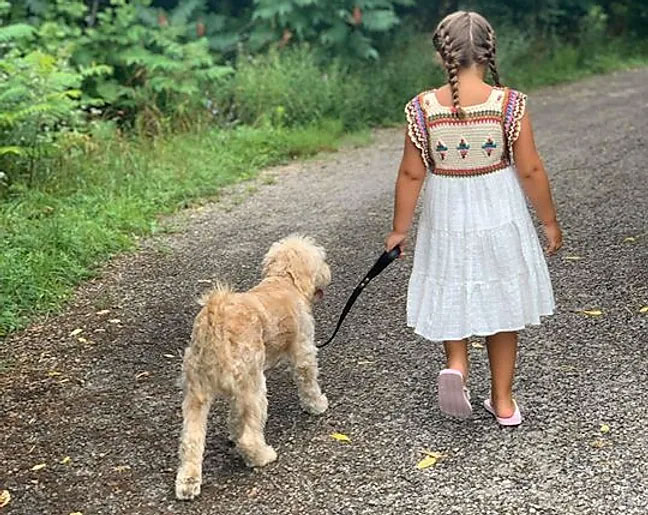

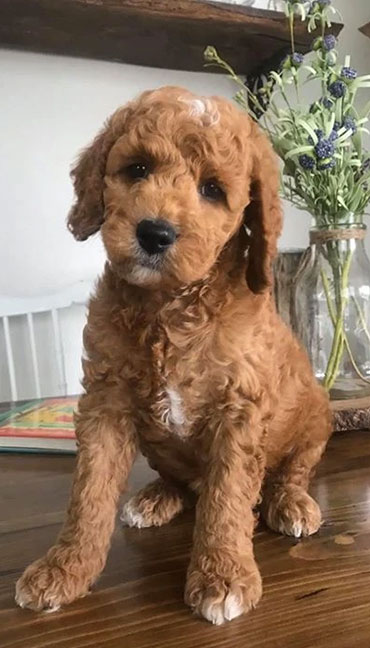
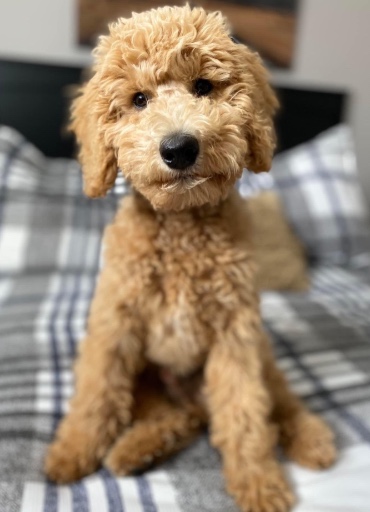
 n
n
